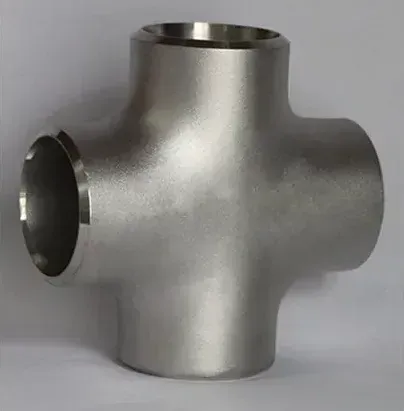-
Cangzhou Yulong Steel Co., Ltd.
-
Phone:
+86 13303177267 -
Email:
admin@ylsteelfittings.com
- English
- Arabic
- Italian
- Spanish
- Portuguese
- German
- kazakh
- Persian
- Greek
- French
- Russian
- Polish
- Thai
- Indonesian
- Vietnamese
- Zulu
- Korean
- Uzbek
- Hindi
- Serbian
- Malay
- Ukrainian
- Gujarati
- Haitian Creole
- hausa
- hawaiian
- Hebrew
- Miao
- Hungarian
- Icelandic
- igbo
- irish
- Japanese
- Javanese
- Kannada
- Khmer
- Rwandese
- Afrikaans
- Albanian
- Amharic
- Armenian
- Azerbaijani
- Basque
- Belarusian
- Bengali
- Bosnian
- Bulgarian
- Catalan
- Cebuano
- China
- China (Taiwan)
- Corsican
- Croatian
- Czech
- Danish
- Esperanto
- Estonian
- Finnish
- Frisian
- Galician
- Georgian
- Kurdish
- Kyrgyz
- Lao
- Latin
- Latvian
- Lithuanian
- Luxembourgish
- Macedonian
- Malgashi
- Malayalam
- Maltese
- Maori
- Marathi
- Mongolian
- Myanmar
- Nepali
- Norwegian
- Norwegian
- Occitan
- Pashto
- Dutch
- Punjabi
- Romanian
- Samoan
- Scottish Gaelic
- Sesotho
- Shona
- Sindhi
- Sinhala
- Slovak
- Slovenian
- Somali
- Sundanese
- Swahili
- Swedish
- Tagalog
- Tajik
- Tamil
- Tatar
- Telugu
- Turkish
- Turkmen
- Urdu
- Uighur
- Welsh
- Bantu
- Yiddish
- Yoruba

Oct . 31, 2024 14:42 Back to list
Understanding the Process and Benefits of Tube Butt Welding Techniques for Industry Applications
Understanding Tube Butt Welds A Key Industrial Technique
Tube butt welding is a fundamental process in the metalworking and fabrication industries, essential for creating strong and durable joints between metal tubes. This technique is particularly prevalent in applications that demand high strength and structural integrity, such as in the construction of pipelines, pressure vessels, and various machinery components.
The process of tube butt welding involves aligning two tube ends together and then applying heat, usually generated through an electric arc or via resistance heating, to fuse them. This method ensures that the metal joints maintain their original strength and are as strong as the tubing itself. One of the primary advantages of butt welding is that it creates a continuous grain structure across the weld joint, which enhances the overall mechanical properties of the welded assembly.
Butt welding can be performed using various techniques, including electric resistance welding (ERW), gas tungsten arc welding (GTAW), and plasma arc welding (PAW). Each method has its unique advantages. For instance, ERW is particularly efficient for high-volume production due to its speed, while GTAW offers excellent control over the weld quality, making it suitable for critical applications where precision is paramount.
tube butt weld

To ensure the integrity of the weld, certain preparation steps are necessary
. Tube ends may need to be beveled, cleaned, and properly aligned to avoid defects such as incomplete fusion or misalignment. Properly executed, a tube butt weld results in a solid joint that can withstand high pressures and temperatures, making it ideal for demanding environments.Quality control is another vital aspect of tube butt welding. Various non-destructive testing (NDT) methods, such as ultrasonic testing and radiographic inspections, are routinely employed to detect any discrepancies within the welds. Ensuring that welds meet industry standards and specifications is crucial, especially in sectors such as oil and gas, aerospace, and nuclear power, where safety and reliability are paramount.
In conclusion, tube butt welding is a critical skill and technique within the metalworking industry. Its ability to create robust, reliable joints makes it indispensable for a variety of applications. As technology advances, further innovations in welding processes and materials promise to enhance the efficiency and effectiveness of tube butt welding, securing its place as a cornerstone of modern fabrication and manufacturing. With the right techniques and quality assurance measures in place, tube butt welding will continue to play a vital role in the creation of high-performance structures and systems worldwide.
Latest news
-
ANSI 150P SS304 SO FLANGE
NewsFeb.14,2025
-
ASTM A333GR6 STEEL PIPE
NewsJan.20,2025
-
ANSI B16.5 WELDING NECK FLANGE
NewsJan.15,2026
-
ANSI B16.5 SLIP-ON FLANGE
NewsApr.19,2024
-
SABS 1123 FLANGE
NewsJan.15,2025
-
DIN86044 PLATE FLANGE
NewsApr.19,2024
-
DIN2527 BLIND FLANGE
NewsApr.12,2024
-
JIS B2311 Butt-Welding Fittings LR/SR 45°/90° /180°Seamless/Weld
NewsApr.23,2024











